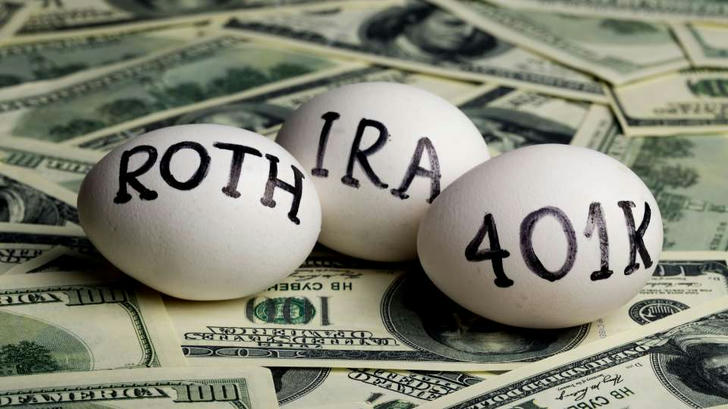Best Retirement Savings Plan: How to Prioritize 401(k) Matches, Use IRAs, and Build a Low-Fee Strategy
Picking the “best” retirement savings plan isn’t about a single account — it’s about the right mix for your age, income and goals. In the U.S. today the heavy hitters are employer plans (mostly 401(k)), IRAs (Traditional and Roth), and tax-smart complements like HSAs and taxable brokerage accounts. Below I’ll cut through the jargon, compare the major options, and give a clear, practical roadmap you can use this year.

The quick comparison — 401(k) vs IRA (what actually matters)
401(k) (employer plan)
🔹Who it’s for: employees whose employer sponsors a plan.
🔹Main benefit: higher contribution limits — the employee deferral limit for 2025 is $23,500, with higher combined limits for employer+employee contributions. Employer matching is common and can materially accelerate saving.
🔹Downsides: limited menu of investment choices and plan fees can vary; some plans have high expense ratios.
IRA (Traditional & Roth)
🔸Who it’s for: anyone with earned income can open one at a broker or bank.
🔸Main benefit: more investment choice and typically lower-cost funds available; Roth IRAs give tax-free qualified withdrawals in retirement (if rules met). IRA annual contribution limits remain in the $7,000 range for 2024–2025 (with catch-up rules for those 50+).
🔸Downsides: lower annual contribution limits than a 401(k); Roth eligibility phases out at higher incomes (check current MAGI limits).
Which to pick first?
1.Contribute at least enough to your 401(k) to get the full employer match — that match is immediate return on your money.
2.If you still have cash to save, consider funding a Roth IRA (for tax diversification) if you’re eligible.
3.Then increase 401(k) contributions up toward the limit. This pathway combines employer “boost” with IRA flexibility. Experts and consumer guides still recommend this sequencing.
Rules and policy bits that change the math (what to watch now)
🔹Contribution limits: 401(k) employee deferral limits and IRA limits are adjusted periodically. For 2025, the 401(k) employee limit rose to $23,500; IRA limits remain around $7,000 (with catch-up provisions). These numbers affect how much you can shelter each year.
🔹RMD timing and Secure Act changes: Recent law changes moved required minimum distribution (RMD) rules — the RMD age has shifted in recent years and will shift again under SECURE 2.0 provisions — so coordinate Roth conversions and withdrawal timing with a tax-aware advisor.
🔹Social Security still matters: Social Security remains a core retirement income source for many households and continues to get annual cost-of-living adjustments (COLA). Include expected Social Security income in your plan projections rather than ignoring it.
A realistic sample plan — “Where to put $10,000 in year one?”
Assume you have $10,000 to allocate toward retirement this year and you get an employer match up to 4% of pay.
🔸Step 1: Put enough into your 401(k) to get the full employer match (say that costs $2,000). You’ve effectively captured an immediate 50–100% return on that matched portion.
🔸Step 2: Fund a Roth IRA with $6,000 (if eligible by income) to gain tax-free growth on future withdrawals.
🔸Step 3: Put remaining $2,000 back into the 401(k) (or a taxable brokerage if you’ve hit IRA/401(k) limits) to keep investing in diversified funds.
Why this mix works: employer match first, then Roth for tax diversification, then extra into workplace plan for higher limits and payroll convenience.
Practical tips that actually move the needle
1.Automate increases. Set your 401(k) to auto-increase by 1% on each raise — small increases compound a lot over decades.
2.Keep fees low. Prefer low-cost index funds (Vanguard, Schwab, Fidelity index funds) inside both your 401(k) and IRA — high fees eat returns.
3.Use tax-smart buckets. Think in terms of tax-deferred (Traditional), tax-free (Roth), and taxable buckets to manage future tax flexibility.
4.Build a cash buffer (2–5 years) for near-term spending so you won’t be forced to sell investments during market downturns.
5.Revisit asset allocation with age. Shift gradually to more income and lower-volatility holdings as retirement nears, and consider annuities or bond ladders for guaranteed income if that fits your goals.
Common mistakes to avoid
🔹Skipping the employer match.
🔹Letting plan fees quietly eat returns.
🔹Putting all retirement savings in a single account type (no tax diversification).
🔹Withdrawing early or using retirement accounts for short-term needs unless it’s an absolute emergency.
Final checklist: your next 30 days
🔸Check your 401(k) match and set contributions to capture it.
🔸Open or top up a Roth IRA if you qualify.
🔸Compare fees in your 401(k) fund menu; ask HR for the plan’s expense summary.
🔸Build or confirm your 2–5 year cash bucket.
🔸If you’re 50+, review catch-up options and consider strategic Roth conversions with tax advice.
Bottom line
There is no single “best” retirement product — but there is a best approach: capture employer match, diversify across tax buckets (401(k) + IRA), keep fees low, and automate disciplined savings. Do that consistently and you’ll be far better positioned than most.
Highlights of Retirement Savings changes for 2025
9 best retirement plans in October 2025
